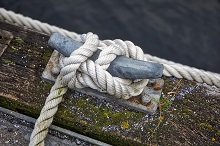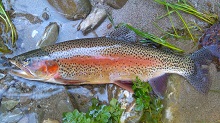Fishing Knots
This is a collection of animated fishing knots that can help people unfamiliar to tying nylon. It is very important to use good knots when fishing with nylon because nylon can weaken considerably if you do not tie a knot correctly.
A very good and simple way to cut nylon fishing line is to use a pair of nail clippers, you can have them on a string and maybe tie this onto your tackle box so you don’t loose it.
Fishing Knots; just click on the name of the knot to see the animated instructions.
The Albright Knot is primarily used for joining monofilament lines of unequal diameters, such as your main line to a fluorocarbon leader or shock leader. It is not an easy knot to tie but a good tight Albright is small and won’t catch on the rod guides during a cast
Blood Knot: Maybe the most common way of joining two pieces of nylon of similar thickness together. Wet the knot before you tighten it. It is very important that you tighten it evenly. Each turn should , when the knot is tightened, lie even next to the nearest turn, they should not cross each other
Blood Bight Knot: This is a very useful not for creating dropper loops, a good knot for targeting kahawai keeping the bait off the bottom.? The advantage of this knot is that the nylon retains 95 percent of its breaking strain.
Butterfly Dropper: Quick and easy to tie. Creates a loop that will stand away from main line. This knot is most suitable for lines with breaking strains of over 15 kilo. Make sure you tighten this knot securely or it can slip.
Centauri Knot: This knot is principally used to attach hooks through the eye to the line. Works well on a wide range of line strengths and claims to retain 96% of breaking strain
Swivel to Double Knot: This knot allows you to attach a swivel to a loop, a very useful knot.
Dropper Loop 1: This knot is very useful for keeping your bait off the bottom, this is a very popular surf fishing rig.
Dropper Loop 2: This is another version of the popular dropper loop knot
Grinner Knot: A very strong knot, great for tying swivels hooks etc to the main line.
Half Blood Knot: This is a high strength multi purpose knot. It’s main use is to attach swivels, hooks and lures to the main line.
Half Blood Knot 2: This is a modified version of the original
Longliners Knot – For attaching a hook line to a continuous heavy main line. Will not slip up or down the line
The Palomar Knot is another very simple knot for terminal tackle. It is regarded by the International Game Fish Association consistently as the strongest knot known. It’s great virtue is that it can safely be tied at night with a minimum of practice.
Thumb Knot: A great knot of attaching hooks etc to heavy line, this knot is kind of tricky to do at first.
Turtle Knot: This knot helps take the pressure off the eye of hook and places it on the shaft. Commonly used on fly hooks
The Uppper Saugeen Habitat Restoration Association is a group of volunteers, working on restoring the Upper Saugeen River. Thank you for your support.
These knots are strictly copyrighted to and where used on this site with permission from Strike Zone South Africa



